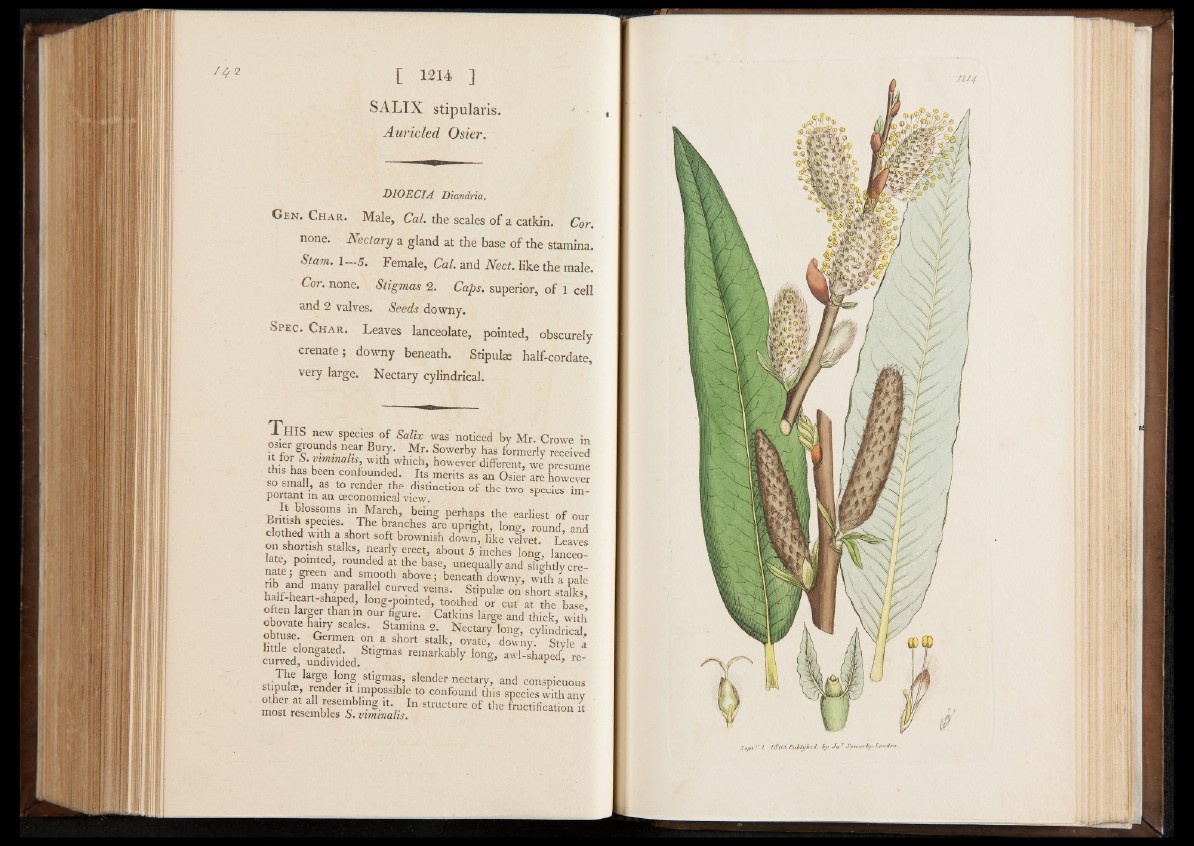
S A L IX stip u la ris.
Auricled Osier.
DIOECIA Diandria.
G en . Char. Male, Cal. the scales of a catkin. Cor.
none. Nectary a gland at the base o f the stamina.
Stam. 1—5. Female, Cal. and Nect. like the male.
Cor. none. Stigmas 2. Caps, superior, o f 1 cell
and 2 valves. Seeds downy.
Spec. Char. Leaves lanceolate, pointed, obscurely
crenate; downy beneath. Stipuhe half-cordate,
very large. Nectary cylindrical.
T h i s new species of Salix was noticed by Mr. Crowe in
k forg<T*£? nrar ,M,r- Sowerby has formerly received
, • S. mminalis, with which, however different, we presume
this has been confounded. Its merits as an Osier are however
so small, as to render the distinction of the two species important
m an (Economical view.
It blossoms in March, being perhaps the earliest of our
British species. The branches are upright, long, round and
clothed with a short soft brownish down, like velvet. Leaves
on shortish stalks, nearly erect, about 5 inches long, lanceo-
late pointed, rounded at the base, unequally and slfghtly cre-
nate, green and smooth above; beneath downy, with I pale
rib and many parallel curved veins. Stipule on short stalks
half-heart-shaped, long-pointed, toothed or cut at the base"
oken larger than in our figure. Catkins large and thick, with
obovate hairy scales. Stamina 2. Nectary long, cylindrical
obtuse Germen on a short stalk, ovate, d ow ^ T S ty lfa
c u L t 3 w d'edS " £," * S remarkabl!' l0"s- « M “ P re-
The large long stigmas, slender nectary, and conspicuous
othS-at’ afinder lt, 11mP°sslbi^ t0 confound this species with any
other at all resembling it. In structure of the fructification it
most resembles S. vvnnnalis.